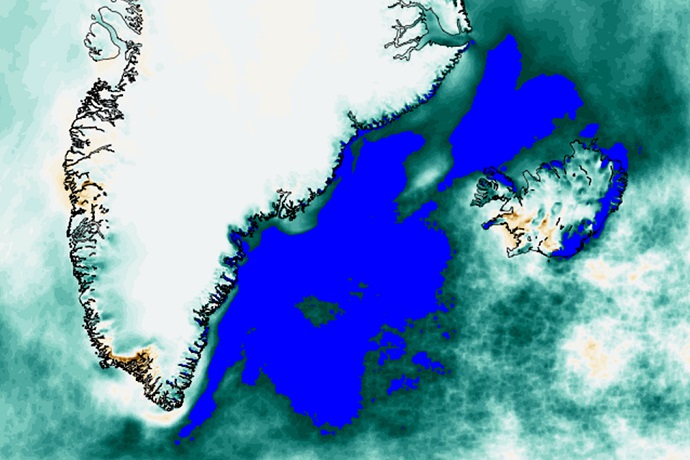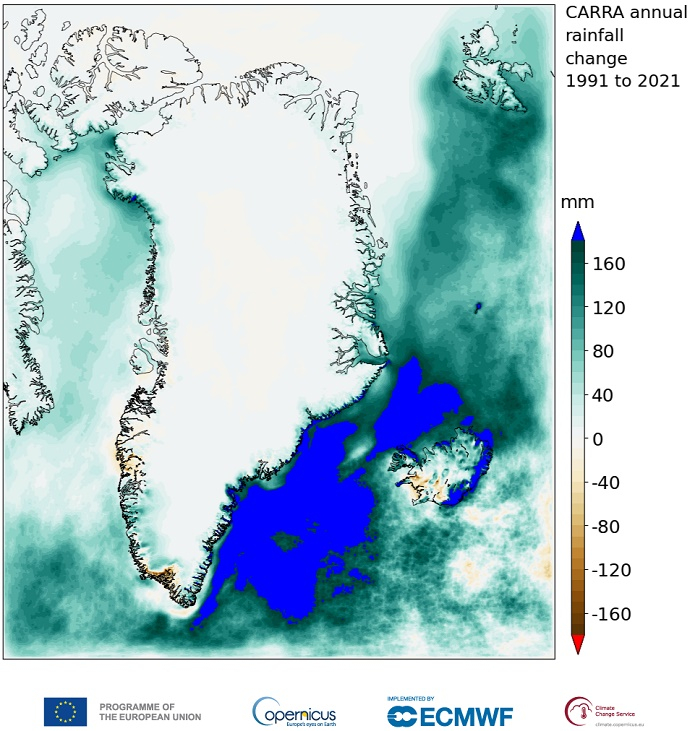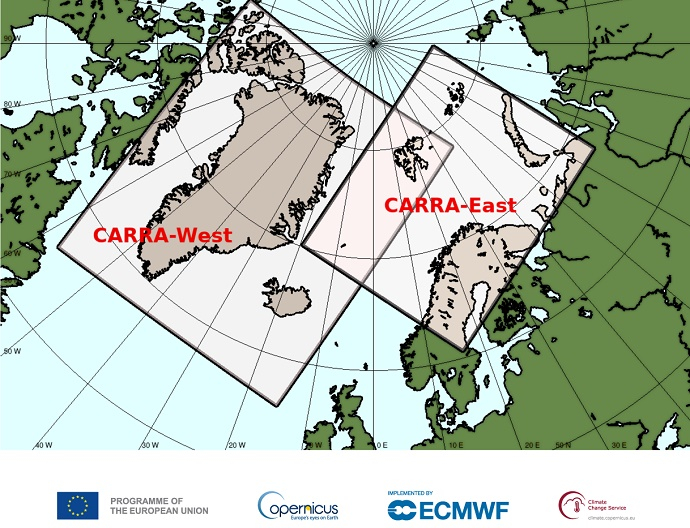

Scientists from the EU’s Copernicus Climate Change Service (C3S) implemented by ECMWF have observed major changes in Arctic precipitation, air temperature and sea-ice coverage over the most recent three decades.
The changes have big impacts in the Arctic, by they also affect northern hemispheric weather and climate more generally. To follow these changes with unprecedented detail and accuracy, C3S has developed the Copernicus Arctic Regional Reanalysis (CARRA): a state-of-the-art data-driven reanalysis that enables a new focus on the Arctic climate.
One of the trends is that, on top of an increase in temperature, precipitation is also increasing in the Arctic, particularly as rain over ocean regions.

A map of change in annual rainfall from 1991 to 2021 shows a particularly marked increase along the southeast coastline of Greenland.
This is not only caused by higher air temperatures but also by increases in humidity. Warming, changes in precipitation patterns, and melting of sea ice affect each other. This could have an impact on trends in other regions, the increase of temperatures globally, and changes in circulation patterns.
The CARRA dataset was produced by a consortium contracted by C3S and led by the Norwegian Meteorological Institute. Partners are the meteorological services of Denmark, Sweden, Iceland, Finland and France, and the Geological Survey of Denmark and Greenland.
Monthly updates
CARRA is a new tool to monitor the evolution of weather extremes and climatic trends for some parts of the Arctic. It applies a wide range of observations from both in-situ and satellite sensors. These observations are combined with the C3S ERA5 global reanalysis dataset and a state-of-the-art weather model tailored for CARRA at very fine resolution. CARRA has a horizontal resolution of 2.5 km, while ERA5 has a resolution of 31 km.
The CARRA dataset is now updated monthly, providing new data with three or fewer months latency. As of today, the dataset is complete from September 1990 to December 2022.
Data access to more than 70 variables is free through the C3S Climate Data Store (CDS). The CARRA data is currently focused on two domains along the European sector of the Arctic, CARRA-West (covering Greenland, Iceland, Eastern Arctic Canada) and CARRA-East (covering Svalbard, the Russian High Arctic Islands and northern Norway, Sweden, and Finland).

The precision offered by the data produced by CARRA adds detail to other datasets that encompass the Arctic.
“This new Arctic Regional Reanalysis dataset makes it possible to study the climate change processes in the Arctic in unprecedented detail. It confirms that the Arctic in general is warming at least twice as much as the global average and quite a bit more over ocean areas. The precipitation is increasing overall with a shift towards rain at the expense of snow,” says Carlo Buontempo, C3S Director.
For further information, visit the C3S website article on CARRA.
The top image is an excerpt from the plot showing change in annual rainfall from 1991 to 2021. Credit: Copernicus Climate Change Service/ECMWF.
